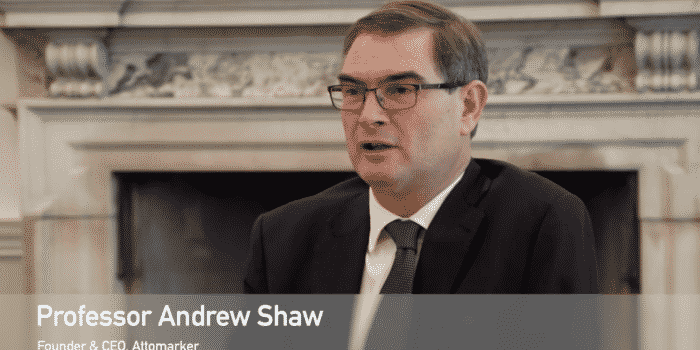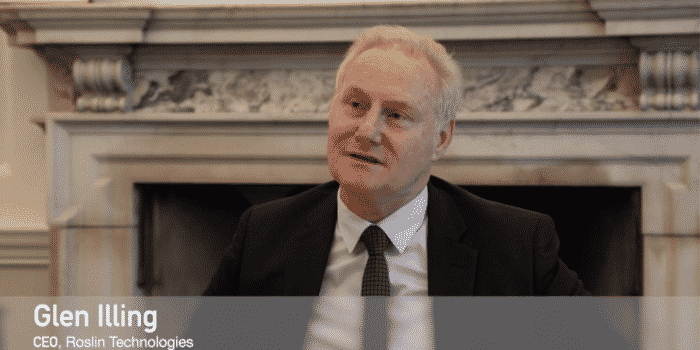By Angel News
28 February 2019
With approximately 20 per cent of university funding coming from the EU, Brexit represents a very specific challenge for Britain’s world-beating higher education sector. Foreign academics are concerned about their right to remain, and universities need to find alternative sources of funding.
This is vital to ensure institutions like Oxford, Cambridge, Edinburgh, Imperial and UCL remain internationally recognised centres of excellence, as do other institutions that lead the field in areas like quantum computing (Bristol), applied material science (Manchester), artificial intelligence (Leeds and Birmingham), agri-science (Roslin) and advanced medicine (Glasgow) to name but a few.
However, for university spinouts, the commercial companies that emerge from research and innovation, there is more positive news. A rarefied group of UK and international investors including foundations, hedge funds and family offices have in recent years identified the potential of these businesses, and the resulting opportunities are now being recognised by the broader investment community. These names include Temasek from Singapore, Tencent and Fosun from China, Redmile from the US, and even Alibaba founders Joseph Tsai and Jack Ma through Blue Pool Capital in Hong Kong.
Changes in the outlook of the university sector, in the wider technology landscape and in the investment industry are, I believe, creating real attractions for those professional investors who can take a long-term view and want to invest in scientific development. For example, the largest investor in our Milltrust British Innovation Fund, which invests in spinouts from UK universities, is one of the UK’s major local authority pension funds.
To understand the opportunities, and their potential, however, it is necessary to understand the changes that have taken place in the landscape. We see three main drivers for investment, and they are at once instructive and illuminating.
The major shift in the outlook of universities, and the people who work in them, will probably come as no surprise – but the effects are profound. These institutions increasingly see, and support, the commercial value of their work. Some of this change is cultural, but it is also about structures and infrastructure.
Whereas in the past, employment law might have stipulated that any intellectual property created by an academic belonged to the university, today there is a typically a significant willingness to share the economics. Accelerators and incubators will typically enter into an agreement with the university, giving them a share of the equity or royalties.
Such approaches not only create a financial incentive for researchers, but also send a clear message that commercial application is a good thing. They also provide a basis for transparency and support from the institution.
The results have been transformative. For example, Oxford Sciences Innovation, an investment fund linked to the university, has raised more than £600m to back spinouts from it since being launched at the end of 2015. This includes money from our British Innovation Fund, in which it is a significant part of the portfolio.
More broadly, research published by Beauhurst1 showed that equity investment into UK universities, based on publicly available data, more than tripled from £309.4m in 2013 to £1bn in 2017. Whilst these sums may look small in contrast with the funds of the big asset managers, there is a strong upward trend, and one we think will accelerate.
The second major driver of investment we see is the wider technology landscape, which is not just facilitating more effective research at lower cost, but also increasing valuations of the spinouts themselves. They can now scale up faster, with lower costs, and broaden their markets, both in terms of use cases and geographies.
Take Attomarker, a direct investment by our fund. Its technology conducts blood tests using a single drop of blood from a finger, providing faster and more convenient blood testing than the traditional service offered by the NHS.
However, it is the company’s integration with other, broader technology developments that make it so exciting. The blood test unit, which is about the size of a wallet, docks with an iPhone 7 or 8. The data is sent up to the cloud and communicates information that can help identify the genesis of an infectious disease and help contain it. Technology allows it, with patient consent, to collect and communicate data, both to individual hospitals and potentially to other bodies such as research organisations.
Another advantage is the value of tests that are being collected for the first time at huge scale. This clinical data can be use to analyse and understand the causes of medical conditions. By piggybacking off the power of the cell phone, a pocket-sized computer, many functions can be provided at a significantly reduced cost.
Even in its first iteration, it could help pioneer improvements in healthcare on a global scale. The World Health Organization has already alerted us to a global pandemic in microbial resistance and the effects of over dependency on antibiotics. Attomarker’s basic C-Reactive Protein (CRP) test accurately alerts patients and care-givers to levels of inflammation that require the intervention of antibiotics or otherwise. This information can reduce the unnecessary prescribing of antibiotics which are impacting microbial resistance globally.
Finally, the third major driver of investment in university spinouts is the change in the investment industry itself – something we are playing a direct role in. To date, investment into spinouts from UK universities has largely been confined to a handful of incubators, and money invested by high-net-worth-individuals largely driven by the significant tax breaks available under the enterprise investment and seed enterprise investment schemes (EIS and SEIS, respectively).
The challenges of identifying and assessing opportunities, and then building a diversified multi-institutional portfolio to provide a sufficient spread of risk, mean that investment funds have been university-specific or highly regionalised at best.
Indeed, this was one of the main reasons why we launched the British Innovation Fund, which today is unique in this space. It supports accelerators and incubators up and down the British Isles, building a unique ecosystem and benefitting from an invaluable vantage point, as we leverage the intimate knowledge of the regional and university-specific funds to spot winners, and help them through subsequent funding rounds. This includes using the fund’s capital and that from our extensive network of investors, in the UK and across the world. Through our hub in Singapore, we can also open doors for our investee companies in the fastest growing markets in the world, in Asia, through strategic and financial partnerships.
This approach of partnering is central to the fund’s operation. For example, it not only invests in but also helped establish Roslin Technologies, the commercialisation arm of the world renowned Roslin Institute, which famously cloned Dolly the sheep, and the University of Edinburgh’s Royal (Dick) School of Veterinary Studies.
Roslin Technologies’ understanding and knowledge of developments in science and the people working in it are, for us and our investors, its real strengths. And, in its first year of operations, Roslin has built strong foundations in Asia and the United States, as well as with other EU partners.
We believe that the changes taking in place in universities, technology and now the investment industry provide a real opportunity for thoughtful investors with a long-term horizon to have portfolios that capture the upside of today’s incredible advances in science outside of public markets, at least in part of their portfolio.
Typical venture funds have a relative short life span and only invest in companies that can be expedited through what is often too short a timeframe to get the best out of the investment. The spirit of partnership, international outlook, unique vantage point, and the patient nature of our invested capital all make for what we believe will be a highly profitable journey for our investors.




